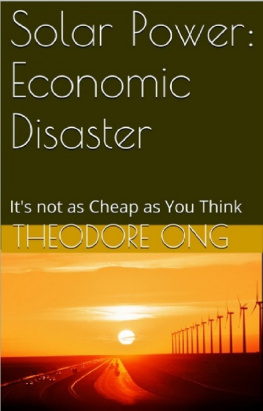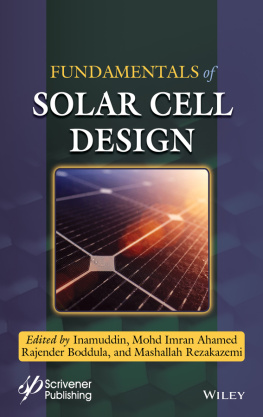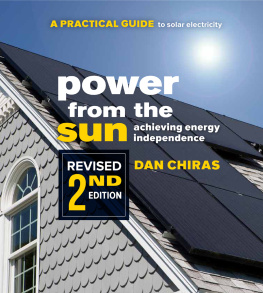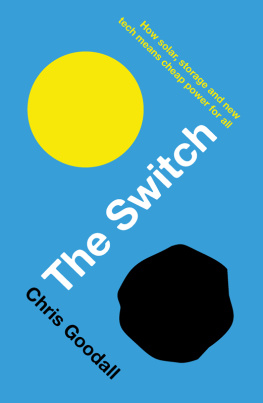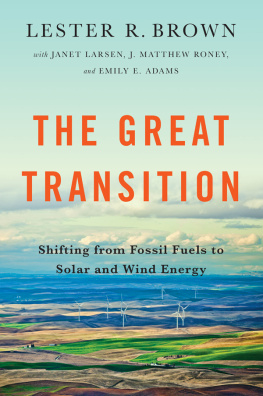Solar Power: Economic Disaster - The SecondEdition
Copyright 2014 Theodore Ong
Published by Efficate Books at Smashwords
Smashwords Edition License Notes
This ebook is licensed for your personal enjoymentonly. This ebook may not be re-sold or given away to other people.If you would like to share this book with another person, pleasepurchase an additional copy for each recipient. If youre readingthis book and did not purchase it, or it was not purchased for yourenjoyment only, then please return to Smashwords.com or yourfavorite retailer and purchase your own copy. Thank you forrespecting the hard work of this author.
Table of Contents
Acknowledgements
To mum and dad, who taught and got meinterested in economic fundamentals,
To thorium advocates such as Kirk Sorensenand GordonMcdowell for re-igniting my interest in nuclear andrenewable energy.
Thanks to Amazon for book cover.
Special thanks to good friends like Curtiswho contributed and gave valuable input for my second edition.
Preface
Before you Read
This book is structured to facilitate easyreading on e-book devices. It's best to view this document as a pdfor doc file.
You may find the following features in thisbook helpful in facilitating your reading experience:
1. Content Page Links: In case you lose yourway or get tired of scrolling, I've put links atregular intervals to help you find your way around the book. Clickon any chapter in the content page to go to that chapter.
2. Sources: I've intentionally departed fromthe usual style of writing where sources are compiled at the backof the book. This makes it easier for you to visit internet linksto verify what I'm saying instead of scrolling pages of material.This may be subject to change in future editions.
3. Internet links: The book is designed likea wiki-article where there are plenty of links to other relevantsource pages on the internet. You may choose to verify my sourcesby clicking on the links provided.
Second Edition
I've received feedback that arguments in thefirst edition were lacking. Though I wanted to present a purelyeconomic cost-based perspective, it appeared that readers neededand wanted to see more from a book such as this.
The second edition comes with improvedediting, more detailed explanations, and arguments to provokethought. It attempts to cover the economic aspects of the powerplants described more broadly. I hope you enjoy it.
Introduction
Background
I'm an energy enthusiast. I used to love theidea of renewables, nuclear fission and fusion working together topower our planet.
But after Fukushima, my views on nuclearfission were forever changed. I was anti-nuclear.
Two years later, they changed again - I waspro-nuclear, and up till now, still am.
What happened?
I found out about safe nuclear power in theform of Liquid Fluoride Thorium Reactors ( LFTRs )(pronounced "lifters"). I was fascinated and went on look more intothis technology. This was what I found so attractive about it:
- Meltdown proof
- Lack of explosive power
- 200x more fuel efficiency
- 100-200x less waste
- Shorter lived waste (that can be madeuseful and profitable)
- Unlimited, sustainable fuel that outlaststhe sun (thorium)
- Minimal environmental cost
- Cheaper and safer than previous reactors(once research is done)
Furthermore, I stumbled upon films, such as Pandora's Promise , whichmake strong environmental cases for nuclear power. In the film, wesee formerly anti-nuclear environmentalists and activists becomingpro-nuclear because they saw compelling evidence that nuclear powercould save the environment. Even the film's director is a formeranti-nuclear activist.
Advanced nuclear power was so interesting Idecided to write my own book about it. But this book isnt what Imtalking about, the book youre reading is a spin-off.
Inspiration and Provocation
Though films such as Pandoras promiseconvince the majority of their audiences to go pro-nuclear, thereare those who remain anti-nuclear. Having lost the ability to makeenvironmental cases against nuclear power, opponents of the filmoften use economic arguments for solar and wind power in an attemptto bring down the film's case for nuclear power as a practical,environmentally friendly energy solution.
We see this argument play out in videos like these . Herewe see the film's director, Robert Stone (who was himself an exanti-nuclear activist), face off with the Sierra Club arguing aboutthe economics of power generation and debating how well solar powerhas actually fared in removing carbon emissions.
In anothervideo , we see Robert Stone facing off with Dale Bryk.Bryk argues that nuclear power is too expensive, and that solar andwind are getting cheaper, and will out compete nuclear througheconomics. Anti-nuclear advocates like her support the notion thatwe'll only need wind and solar to power the world.
In response to such arguments, I've decidedto write this book to contest the economic claim of solar power. Inthis book, I will not place emphasis on issues outside economicssince the case has already been made in films such as PandorasPromise.
Why Discuss Economics
Economics are an important indicator of howpractical a solution will be. Economics, costs and returns oninvestment (ROI) will generally dictate which form of powergeneration people ultimately use. Like it or not, it is the profitdriven in charge of power generation, and there's very little youor I can do. So if a green solution is to be widely utilized bythese companies, a strong economic case for such solutions must bemade.
Additionally, the major energy users in the21st century will be newly industrializing countries andnations with fast growing economies (eg. BRICS). Economicprosperity will top their priority list, not the environment.Hence, it's important to have economically feasible andenvironmentally sustainable energy solutions made available tothem. Otherwise they will burn dirty fossil fuels (mainly coal) bydefault.
And to the common man, power plants costingmore translate into higher electricity bills. And if the governmentis serious about energy subsides, it probably means that yourepaying for the subsidies through taxes. In any case, the everydayperson should be concerned about the economics and costs of energychoices made because it will eventually affect their bill and taxpayments.
Summarized Key Findings
In the course of investigating solar andwind along with other energy sources, I have concluded thefollowing:
- Solar utility scale power is too expensive even with freeultra-efficient solar cells and freebatteries ($6.56 / watt). Coal is $2.93 / watt; nuclear is$5.53 / watt.
- Wind with storage is better, but still economicallyunfeasible and has very high landcosts .
- 100% Solar / Windhybrids on the utility scale areeconomically unfeasible to operate
- Clean natural gas,hydroelectricity, geothermal energy and nuclear energy are the likely candidates for a greenerfuture. (But in any case, I still don't like any form of fossilfuel)
- Nuclear energy is cheaper than clean coal in the long run (30years)
This book will show how I arrived at suchfindings. And it is my hope that this book will promote criticalthinking into the way we look at energy.
Note: we're using 2012 US dollars.
Sources:
LFTRs in 5 minutes - Thorium Reactors
http://www.youtube.com/watch?v=uK367T7h6ZY
Pandora's Promise
http://pandoraspromise.com/
Sierra Club: Nuclear power not needed; windand solar are
http://www.youtube.com/watch?v=-4Ejkgi_YZE
Analysis: 'Pandora's Promise' one sided
http://www.youtube.com/watch?v=eb7b8PF8G1g
Power Demand
Introduction to Power GenerationEconomics

